Ramdas Iyer was dressed in a traditional outfit. He was wearing a half sleeve jubba along with a white dhoti. His Jolnapai (A cloth back with a long belt like strap) was on his shoulder. He was carrying his own water. Ramdas Iyer happens to be the Curator and Additional Director, National Science Centre (Delhi). He is at the Joint Secretary level in the Ministry of Culture and resides at Delhi. The enthusiastic Hindu visits Coimbatore often in order to visit his ageing parents, R. Narayana Iyer and Radhammal. Savithri Ramdas Iyer works for the Government of India and their son, Aditya, is currently busy with his Ph. D. in Biotechnology. The daughter, Gayathri, is also pursuing her education from Delhi.
Ramaswamy Iyer, the paternal grandfather of Ramdas Iyer, was a revolutionary those days. He had been married to Thangammal. The family of Ramaswamy Iyer had been courtiers at the Kochi Royal Palace. Ramaswamy Iyer was against colonial rule and this nationalist was shot dead by the British in 1933. This was an act of retaliation, for Narayanaswamy Iyer had burnt three policemen alive. The interesting background of Ramdas Iyer made Jaganathan and me drawn towards the stories that he was to narrate during the rest of the day.
My day began early and after my regular recitation of ‘Sri Lalitha Trisathi,’ I had a glass of hot water and began to walk towards Sadasiva Iyer Coffee Club on Raja Street. A brief stop was made at the street side shrine of Selva Vinayagar on Diwan Bahadur Road in R. S. Puram. Thereafter, I had a darshan of Ambal at one corner in Telugu Brahmin Street and after praying at the nearby Vinayagar Temple, I began to rush towards the breakfast point. Ramdas Iyer and Jaganathan were seated on the granite-topped dining table. We ordered for vadai, idli, rava dosa and nei uthapam. The breakfast was pleasing. Jaganathan (Curator & Founder of The Verandah Club) briefed Ramdas Iyer about the Sadasiva Iyer Coffee Club. Ramdas Iyer was happy to learn that the place was nearly 120 years old,and they just served breakfast every day. Coffee was not available despite the board carrying its name was spotted.
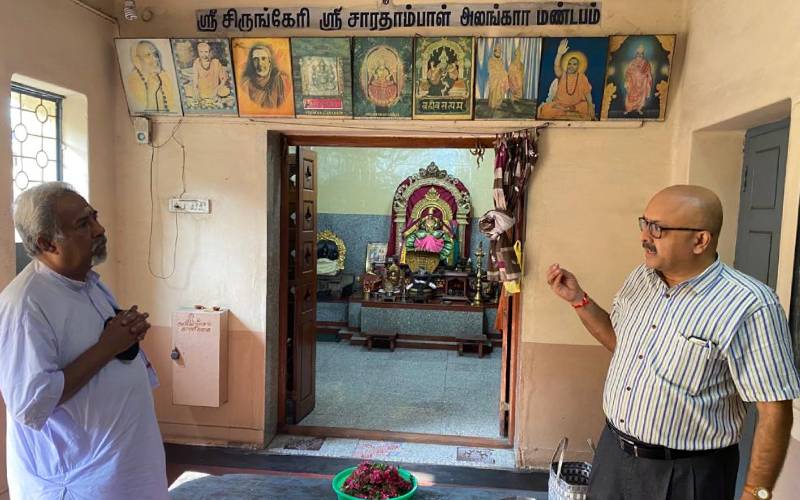
We had our breakfast and then moved towards Sringeri Sankara Mutt. This mutt had been constructed by the Hotelier C. S. Govinda Iyer, and Sir C. P. Ramaswamy Iyer (Former Diwan of Travancore Kingdom) had laid the foundation stone for the same. The old icon of Goddess Sharadha at the shrine in this mutt had been established by His Holiness Sachitananda Shivabhinava Narasimha Bharathi Teertha Swamigal, the Pontiff of Sringeri (1879 - 1912). He had been associated with the developments at Kaladi (The birth place of Aadhi Shankara).
The recently renovated Pattabhirama Venkatramanaswami Temple stands beautifully on Raja Street. Several Vedic Scholars visit this temple and recite verses from the scriptures. A shroudhi was also seen reciting mantra-s from the Sama Veda during our visit.
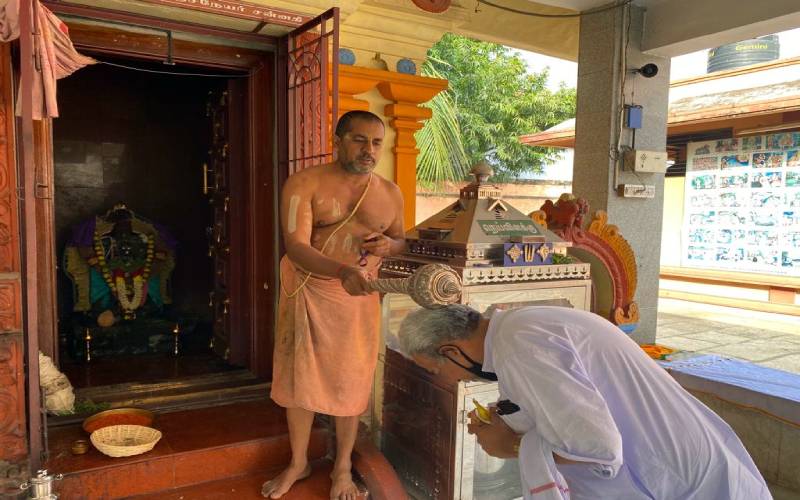
The next stop was at the Pettai Eswaran Temple. The deity here was known as Visweswaraswamy and his consort is Visalakshi. This 500-plus-year-old temple was perhaps constructed during the Vijayanagar Era. The temple has three entrances, one for Lord Hanuman (Nine prayers are offered as per the Dwaitha Sampradhaya in this shrine), one for Lord Visweswara (Here it is as per Adwaita Sampradhaya and they follow some practices as per Saiva Siddhanta also), the third one is the shrine for Lord Venkataramana (The Visishtadwaitha Sampradhaya is followed here).
While each of these shrines have a separate entrance, it is also possible to move from one shrine to another internally too. Interconnecting entrances facilitate this for the devotees. The inclusive nature of Sanatana dharma had in fact made this possible. The priest, Viswanathan, offered us the vada-s which had been strung as a garland for Lord Bhairava. Ramdas Iyer works from a place named after Bhairava! The priest at the Hanuman shrine known as Krishnamurthy placed the silver mace of Hanuman on our heads. He is unique in the sense; he offers a coin to every devotee who prays here.
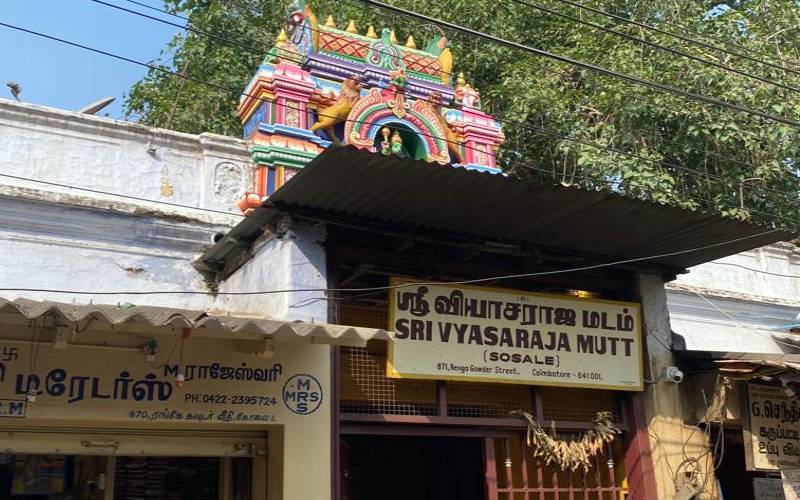
The three of us moved to the Vyasaraja Mutt on R. G. Street. This temple of Lord Hanuman is located in the busy wholesale market area. The icon of Hanuman had been installed by Saint Vyasaraja. This Saint had been the Rajaguru of Emperor Sri Krishna Deva Raya (1509 - 1529) of Vijayanagar. My friend A. G. Venkatesh had introduced me to this shrine. We prayed to Lord Hanuman and the divine couple Lakshmi & Narayana who were ensconced under the old peepal tree. The temple had a number of cows. The priest, Ramachandra Achar, offered us the mantrakshatha.
We got into the car and moved over to Big Bazaar Street. The darshan at the Garadi Temple was new to Ramdas Iyer. We told him about the wrestling corner in the temple. He saw the spot and was happy to observe weights made of stone and maces made of wood. This temple was managed by the Jatti Community People. They had been the ones who had guarded Coimbatore town those days.
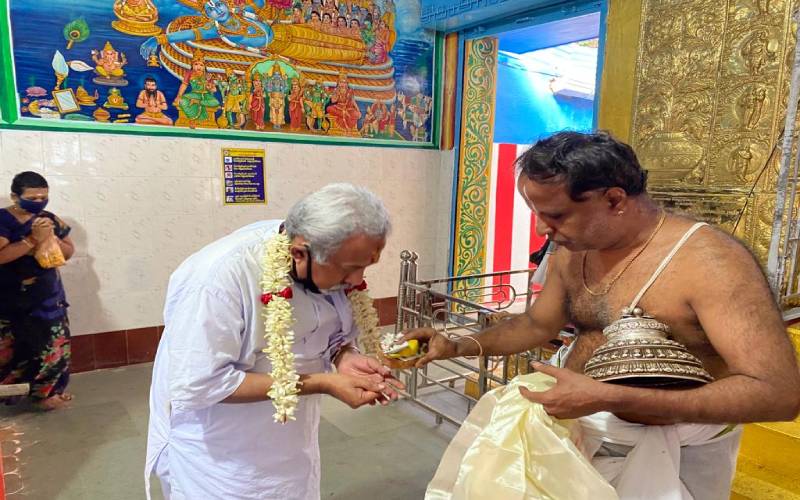
Thereafter we offered our worship at the next door Perumal temple. The sanctum had the icons of Lakshmi Narayana and Rukmini Sathabhama Sametha Venugopalaswamy. The two icons in one sanctum were a rarity. The priest, Appannacharya, told Ramdas Iyer about the Prayoga chakram (Discus of Lord Vishnu found in a unique pose) in the hands of Lord Kasthuri Ranganatha (Processional deity) and we prayed well while passing through the Paramapadha vasal (A special door within any shrine of Lord Vishnu following the Visishtadwaitha Sampradaya).
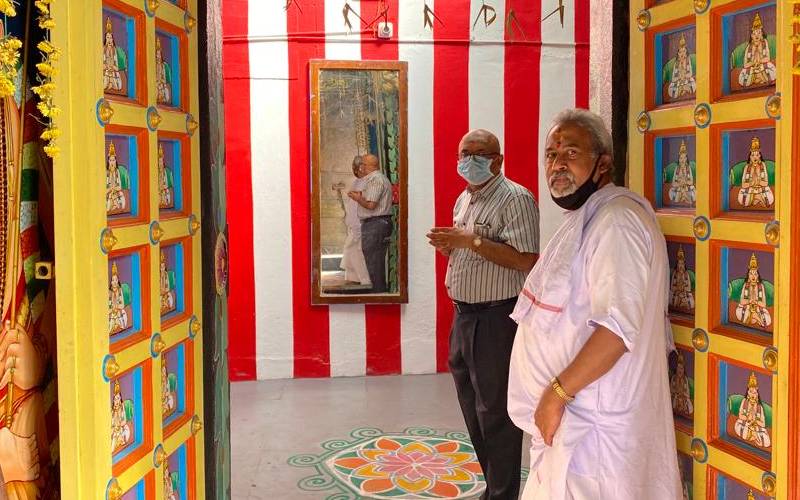
The pilgrimage had been successful, and we decided to have some nice filter coffee. Jaganathan suggested that we have the same at IDC. The coffee at IDC was made with the coffee powder which was prepared at Parampere Coffee in Bengaluru. The venture was founded by my cousin Girija, and her husband Chandan of Bengaluru. We savoured the coffee and had a long chat about temples, Indic writers etc.
Thereafter Ramdas Iyer came over to our office at West Ponnurangam Road in R. S. Puram. He gave us a few productive suggestions. Ramdas Iyer wanted us to network with all the Indic intellectuals in the interest of India. All these scholars were highly qualified and were leaders in their chosen fields. We felt that every Indian should interact with such scholars, and this would help them further to become aware about the knowledge and wisdom of India. The discussion was really fruitful. Jaganathan, T. R. Surya and I, felt truly enriched due to inputs given by Ramdas Iyer.
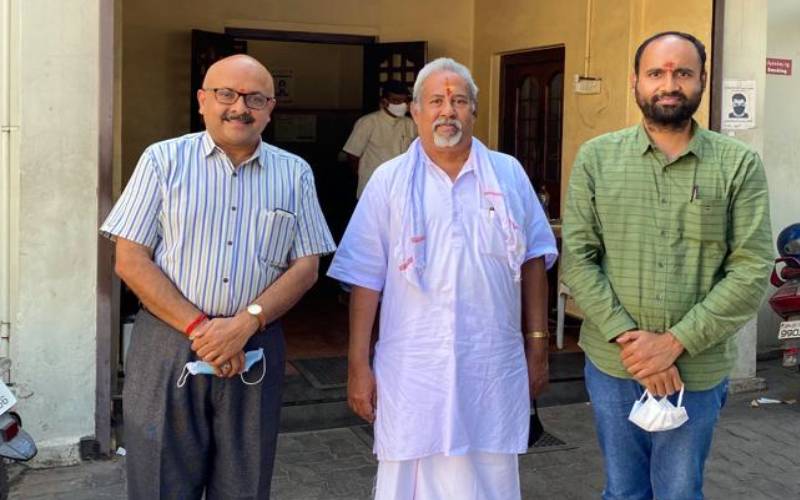
Lunch was at the iconic C. S. Grand Cafe. My friends, Kishore and Govindarajan, took care of us with the best lunch in Coimbatore. The C. S. Grand Cafe is a popular spot. We took pictures of ourselves at both Sadasiva Iyer Coffee Club and C. S. Grand Cafe. Ramdas Iyer shared the story connected with Mani Iyer's Vishranti Gruha at Nagpur. This was originally run by Mani Iyer of Nemmara, Kerala. His brother, Rama Iyer, had been serving the Nobel Laureate Sir C. V. Raman those days. Raman had been to Nagpur those days and Mani Iyer had made food for him.
The Nobel Laureate preferred to eat well-balanced southern meal, and hence had Rama Iyer gone with him to Nagpur. This cook could not move over with Sir C. V. Raman during his overseas jaunt. Therefore, he stayed back at Nagpur and brought over Mani Iyer from Nemmara. The place had served the South Indian meal on plantain leaves. Today Ramanathan, the son of Mani Iyer, manages the eatery. The former Chief Minister of Maharashtra, Devendra Fadnavis, had studied at the Saraswathi Vidyalaya at Nagpur. Ramanathan had studied in the same place. We were indeed happy to know about the eatery connected with Sir C. V. Raman and resolved that we will dine here while visiting Nagpur.
The three of us enjoyed C. S. Grand Cafe. Jaganathan fasts on Thursdays and therefore was content with some coffee, butter milk and vada from Pettai Eswaran Temple. It was a great day, for we had visited a number of shrines. The Banalingam was actually from the River Narmada. My relative, B. Rajasekhar, had been responsible for safety locker in the temple. This was facilitated by S. M. Baliga & Co (Donor). The Lakshmi Narayana Venugopalaswamy Temple faced south and hence was akin to visiting Sri Rangam. The former priest at this temple had served as the fiftieth Jeeyar (His Holiness Ranga Narayana Jeeyar) of the Ramanuja Mutt at Sri Rangam. A number of traders from the Pettai area were known to visit the temple on an everyday basis.
The pilgrimage of Ramdas Iyer at the Pettai area of Coimbatore was successful and it opened a lot of new vistas for all of us. Our wise elders had understood the efficacy of these pilgrimages and had indulged in the same for centuries. Let us continue to do so during the times to come.
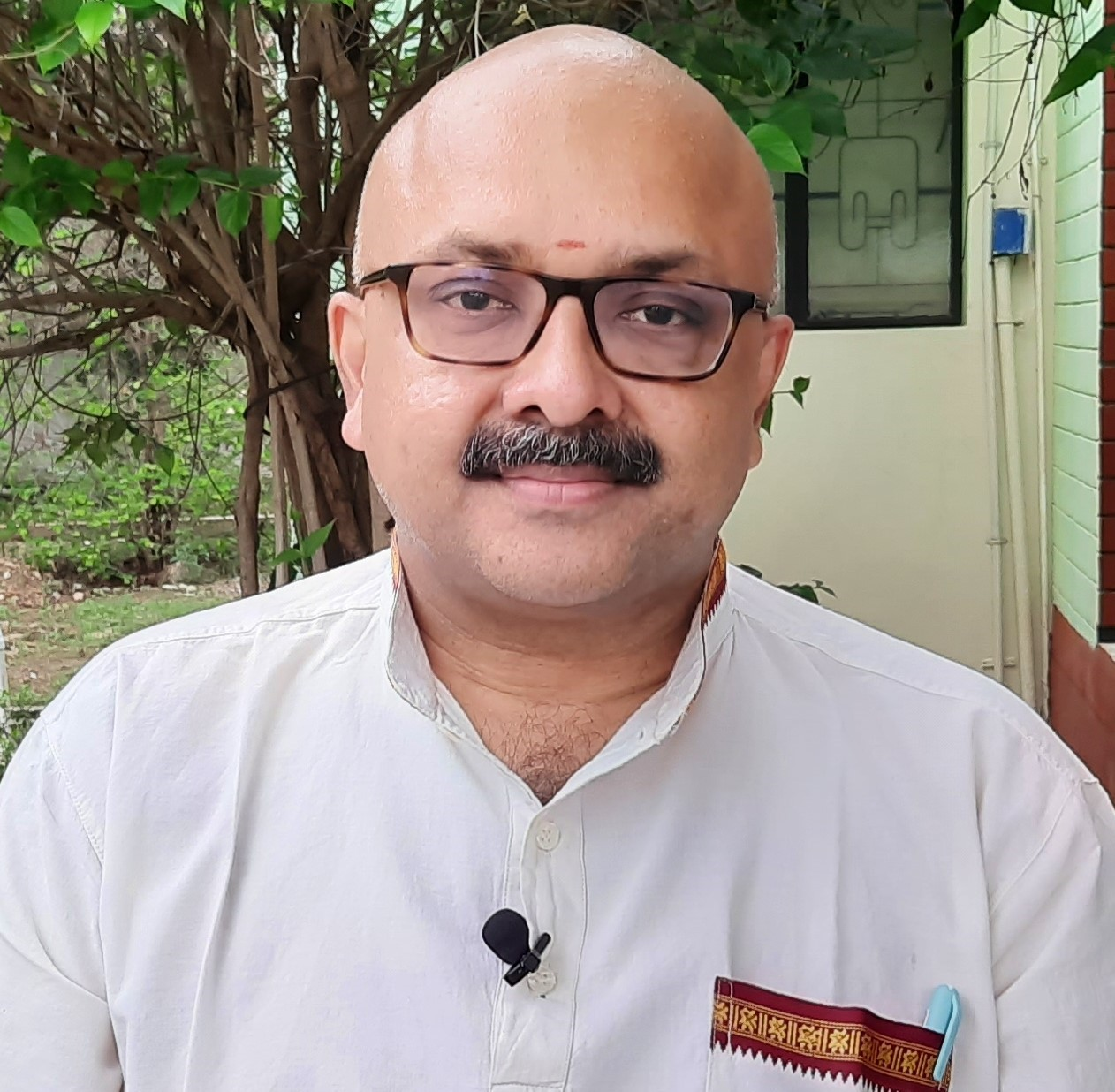 Mr. Rajesh Govindarajulu is one of the founding members of the Verandah Club Pvt. Ltd. He is a leading columnist, historian, jeweler, entrepreneur, and a heritage enthusiast who is earnestly working to revive the past in the light of the present. Experiential learning about the history of Coimbatore is his main course of interest and he is also a panel member of many colleges in the city.
Mr. Rajesh Govindarajulu is one of the founding members of the Verandah Club Pvt. Ltd. He is a leading columnist, historian, jeweler, entrepreneur, and a heritage enthusiast who is earnestly working to revive the past in the light of the present. Experiential learning about the history of Coimbatore is his main course of interest and he is also a panel member of many colleges in the city.
NEXT ARTICLE

At the southernmost tip of this mesmerising ensemble lies the majestic Great Nicobar Island, boasting an impressive landmass of about 910 square kilom...

Bharath has always been a land traversed by spiritual masters/ Guru since time immemorial. These spiritual masters have always upheld the core princip...

South India contains its fair share of unique pilgrimage centres. These divine places of worship have a prominent Sthala Purana, devoted followers, di...